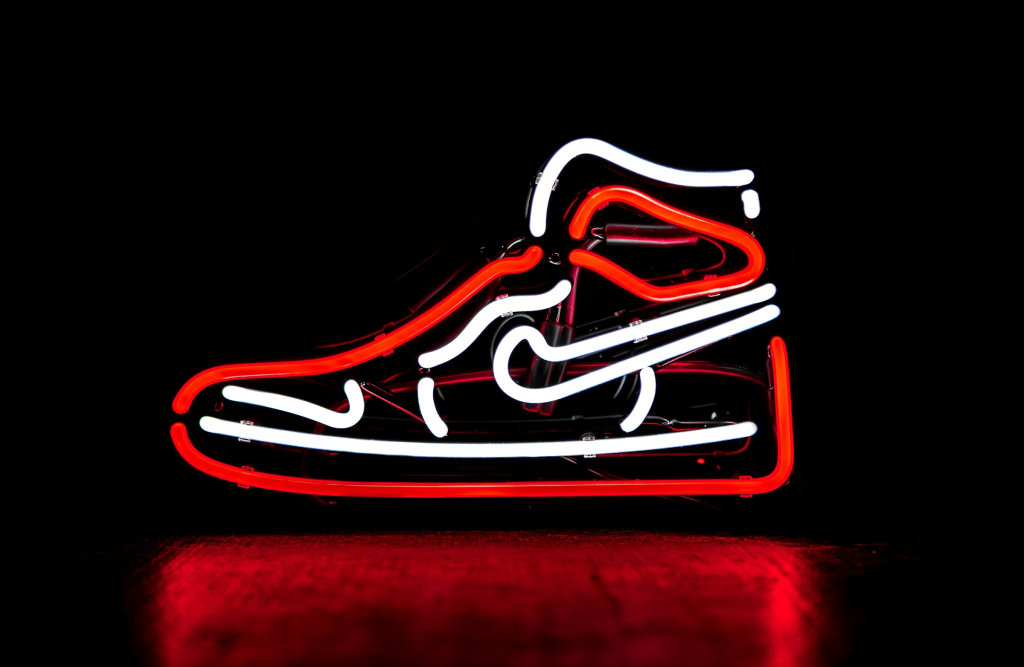Nike, a prominent player in the athletic footwear industry, is undergoing a strategic transformation as it faces stiff competition from emerging brands. The company has traditionally relied on its iconic basketball shoes to drive sales, but recent market trends have prompted a shift in focus.
Reuters reported that following a post-earnings conference call when management said Nike had lost market share in running shoes—a category that has seen a sharp increase in popularity over the past year—shares of the company were down 5.6% in extended trading on Thursday.
Changing Landscape in Sneaker Industry
Nike CFO Matt Friend recently announced a strategic move to reduce supplies of classic shoes like the Air Force 1 sneakers to prioritize upcoming launches and fresh product innovations. This decision marks a significant departure from Nike's previous emphasis on iconic styles, signaling a shift in consumer preferences within the sneaker market.
The sneaker industry is transforming, with emerging brands like On and Hoka gaining traction among consumers globally. This surge in popularity has challenged established players like Nike, pushing them to adapt to evolving market trends to remain competitive.
Impact on Market Dynamics
In the footwear category, On's market share at Dick's Sporting climbed to 8.2% in February from 6.1% in October 2023, while New Balance's market share jumped to 5.4% from 4.6% during the same period.
In comparison, YipitData, a company that compiles market share utilizing email receipt and transaction data, shows that from October to February, Nike's Jordan's market share at the retailer remained over 5%.
MSN noted that the rising market shares of brands like On and New Balance reflect a shift in consumer preferences away from traditional offerings. Nike's Jordan line, once a dominant force in sneaker sales, faces increased competition from brands catering to the changing tastes of the modern consumer.
Industry analysts point to changing consumer tastes as a driving factor behind the decline in demand for classic Nike styles. Brands focusing on chunky dad shoes and terrace styles are resonating more with customers, posing a challenge to Nike's traditional sneaker offerings.
Market Share Trends
Recent data reveals a notable increase in market share for brands like On and New Balance, indicating a clear preference shift among consumers. Nike's Jordan line, on the other hand, has experienced stagnant market share figures in the face of evolving fashion trends.
Competitors like New Balance and Adidas are capitalizing on the evolving sneaker market, leveraging styles like the Adidas Samba sneakers to attract customers who seek alternative fashion choices. This shift highlights the need for Nike to adapt its product strategy to meet changing consumer demands.
Photo: Josh Redd/Unsplash



 Green industry yes, conservation no: a budget for people, not for nature
Green industry yes, conservation no: a budget for people, not for nature  How supermarkets are changing their branding to make you think they’re cheaper
How supermarkets are changing their branding to make you think they’re cheaper  PUMA Welcomes AC Milan Star Theo Hernández to the Family
PUMA Welcomes AC Milan Star Theo Hernández to the Family  Coca-Cola Launches Data-Driven Insights Platform for Retail and Foodservice Industries
Coca-Cola Launches Data-Driven Insights Platform for Retail and Foodservice Industries  Coca-Cola Launches Lens Platform to Offer Key Data for Retail and Foodservice
Coca-Cola Launches Lens Platform to Offer Key Data for Retail and Foodservice  ECB Calls for Monitoring and Possible Regulation of AI in Finance
ECB Calls for Monitoring and Possible Regulation of AI in Finance  ALWAYTH x Adidas Samba: Revolutionizing Sneaker Culture with Fashion-Forward Collaboration
ALWAYTH x Adidas Samba: Revolutionizing Sneaker Culture with Fashion-Forward Collaboration  The 2023 Sir Paul Curran award for academic journalism goes to Barbara Sahakian
The 2023 Sir Paul Curran award for academic journalism goes to Barbara Sahakian  McDonald's Philippines Launches 'Ride the Arches' for Cyclists
McDonald's Philippines Launches 'Ride the Arches' for Cyclists  Lapstone & Hammer Expands ASICS 'Dip Dye' Series with Beverage-Inspired Colorways
Lapstone & Hammer Expands ASICS 'Dip Dye' Series with Beverage-Inspired Colorways  Converse Faces Job Cuts as Nike Aims for $2 Billion in Cost Savings
Converse Faces Job Cuts as Nike Aims for $2 Billion in Cost Savings  Semaglutide's Benefits Beyond Weight Loss: New Insights from the SELECT Trial
Semaglutide's Benefits Beyond Weight Loss: New Insights from the SELECT Trial  Aldi, Hy-Vee Recall Cream Cheese Products Over Potential Salmonella Contamination
Aldi, Hy-Vee Recall Cream Cheese Products Over Potential Salmonella Contamination  McDonald’s Rolls Out $5 Meal Deals to Emphasize Affordability Amid Rising Costs
McDonald’s Rolls Out $5 Meal Deals to Emphasize Affordability Amid Rising Costs 





























